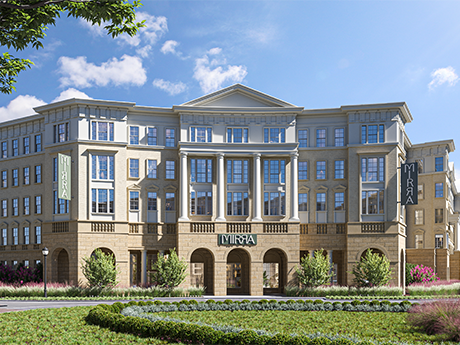DALLAS — Texas has earned bragging rights on the multifamily investment front. Investment firm CONTI Capital — has developed a proprietary location analysis technology platform known as the CONTI Index — lists Dallas, Houston and Austin among the top 10 strongest markets for multifamily investment in the first half of 2023.
Dallas-based CONTI released the rankings in January. From one to 10, the most attractive places to park apartment capital this year are as follows: (1) Dallas; (2) Atlanta; (3) Austin, Texas; (4) Charlotte, North Carolina; (5) Orlando, Florida; (6) Tampa, Florida; (7) Houston; (8) Nashville, Tennessee; (9) Raleigh-Durham, North Carolina; (10) Phoenix.
The winning metropolitan statistical areas (MSAs) were chosen based on housing supply and affordability, population demographics, labor market durability and multifamily risk-reward. These factors determine which cities are likely to perform for investors in the next three to five years, according to CONTI.
The analysis is conducted twice annually and released in January and July. The report is based on data from the company’s CONTI Index, which identifies high-performing areas and submarkets and analyzes potential acquisition opportunities against key variables, such as development supply and demand.
Sun Belt cities comprised the entirety of the market top 10 for the first half of 2023. Texas is home to three of the healthiest investment markets. According to the report, Dallas, Austin and Houston are doing well across six key sub-indexes: housing supply and affordability, labor market durability, multifamily risk-reward, resident quality of life and fiscal health.
The Dallas-Fort Worth (DFW) metroplex, according to CONTI, demonstrates all the key attributes of a thriving multifamily market with high renter demand, including employment growth, office-usage and labor force participation. CONTI’s research shows DFW is the top market in the nation in terms of job growth across major employment sectors and aggregations, including health and education, FIRE (finance, insurance, real estate), TAMI (technology, advertising, media, information) and professional and business services.
DFW has also seen high total population growth, with the population increasing by about 122,000 new residents per year, according to the report.
Two other Texas cities found their way onto CONTI’s top 10, with Austin taking third place and Houston taking seventh. CONTI points out that the labor market in Austin has remained anchored by tech companies such as Oracle, Apple, Tesla and Samsung, and that the overall unemployment rate in the city has remained relatively low, at 2.7 percent as of December 2022. This, combined with the presence of the University of Texas at Austin, is why CONTI researchers say they are “particularly bullish on demand for Class A multifamily in Austin.”
Houston’s economy, meanwhile, has historically been bolstered by the oil and gas industry, but the market has diversified into sectors such as technology and health care over the past decade. CONTI also cited the high number of millennials (born between 1981 and 1996) as residents, as well as the rate of new household formation in the city over the past year as core drivers for rental housing demand. More than 34,000 new households were formed in Houston in 2022, the report says.
Outside of Texas, the city of Atlanta came in at the second spot. CONTI cited Atlanta’s strong demographic fueled by many young renters living in the city because of several colleges and universities, including Emory University, Georgia State University, the Georgia Institute of Technology, Morehouse College and Spelman College, as well as the city’s business-friendly environment.
Click here for the full report.
— By Channing Hamilton, Associate Editor, Multifamily & Affordable Housing Business


